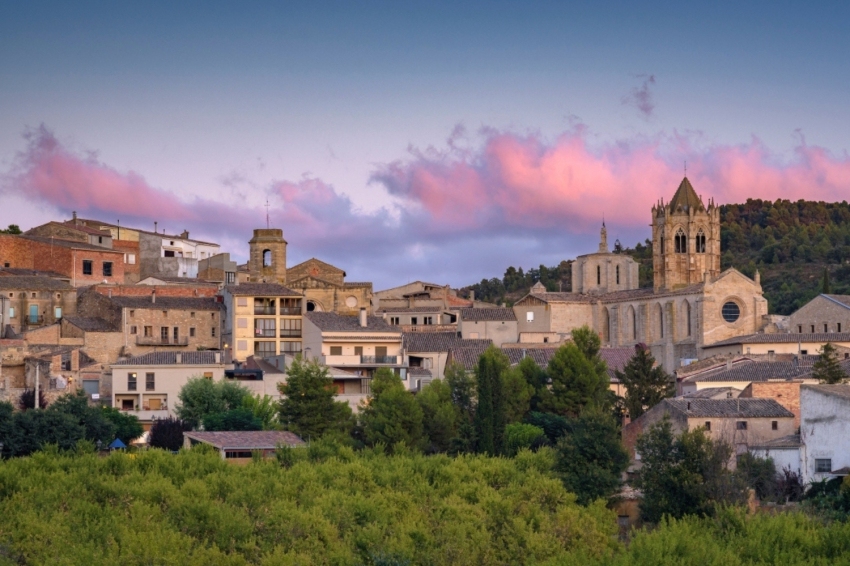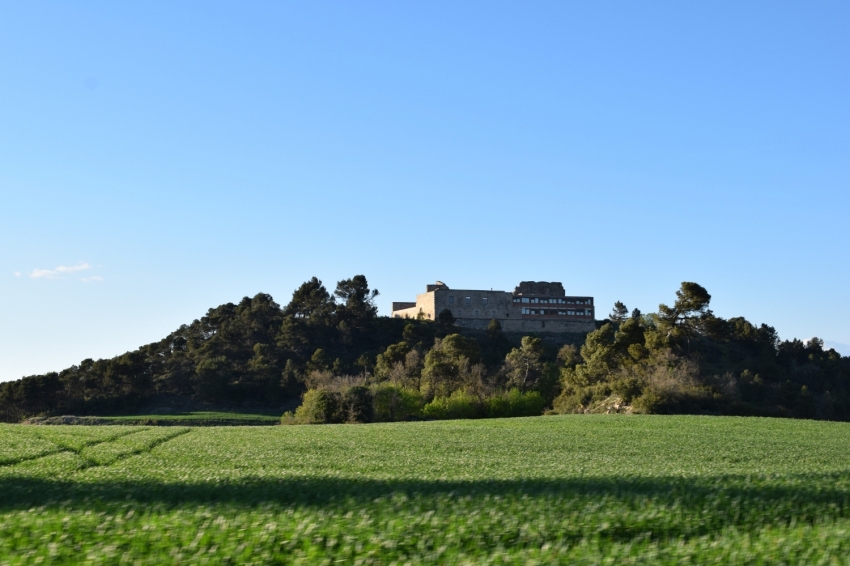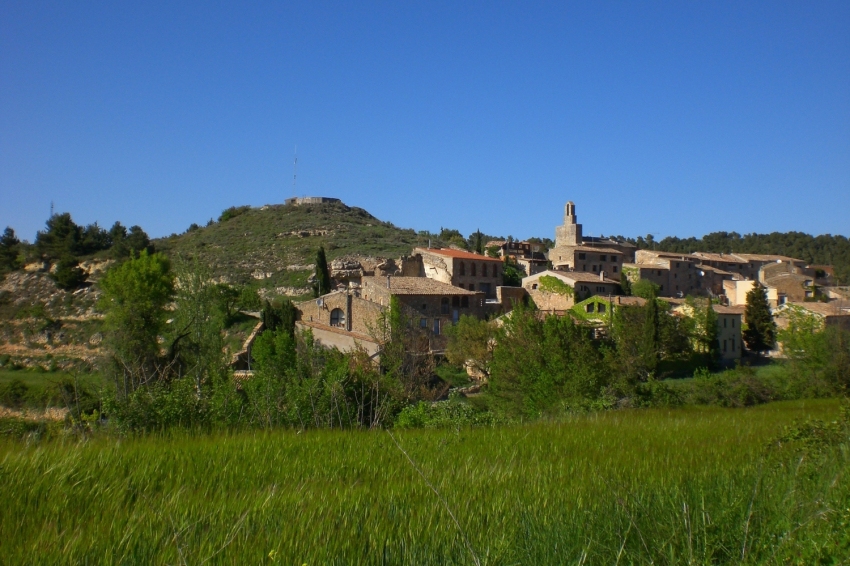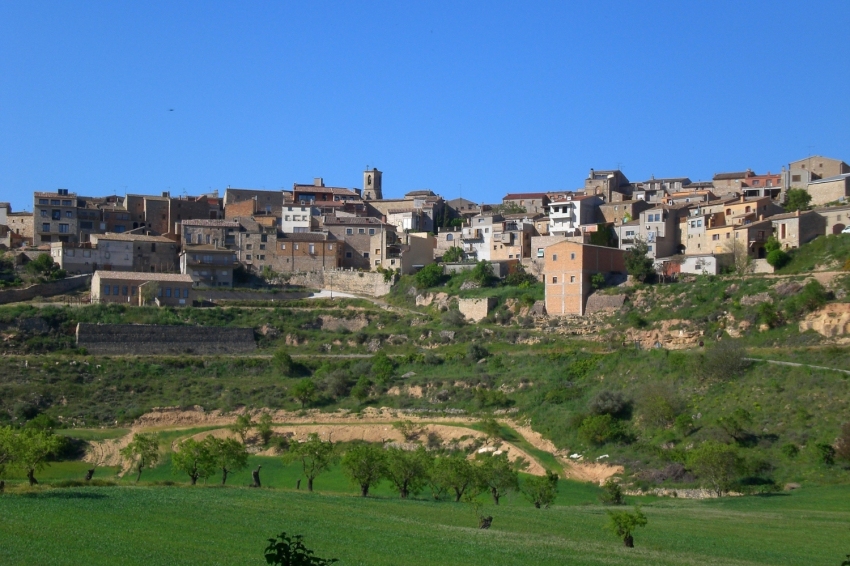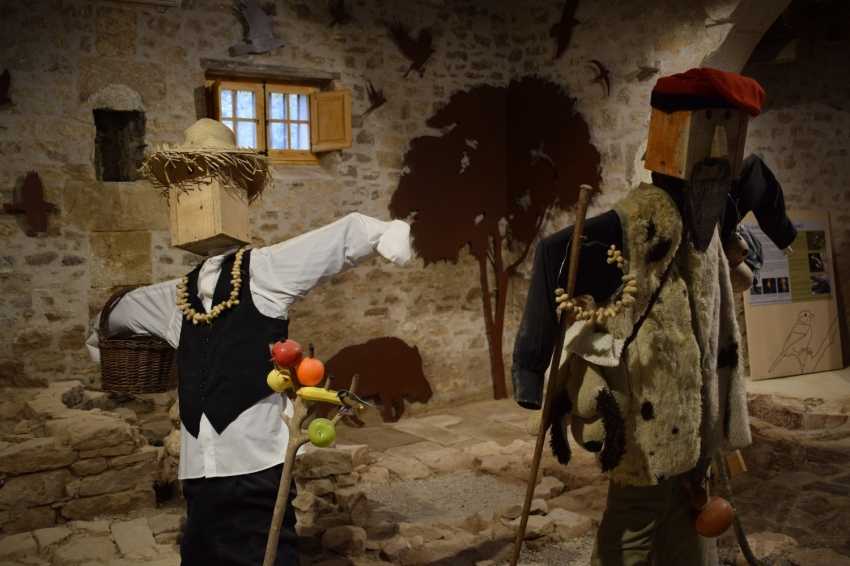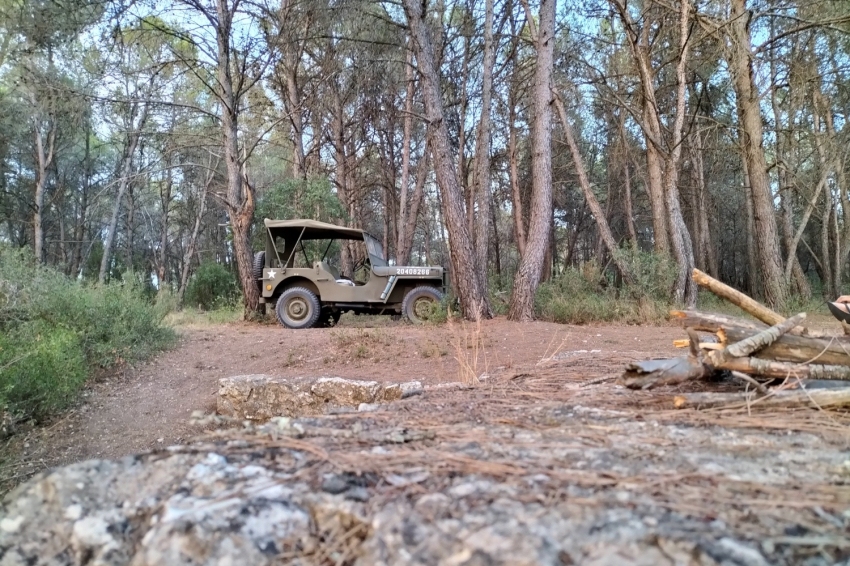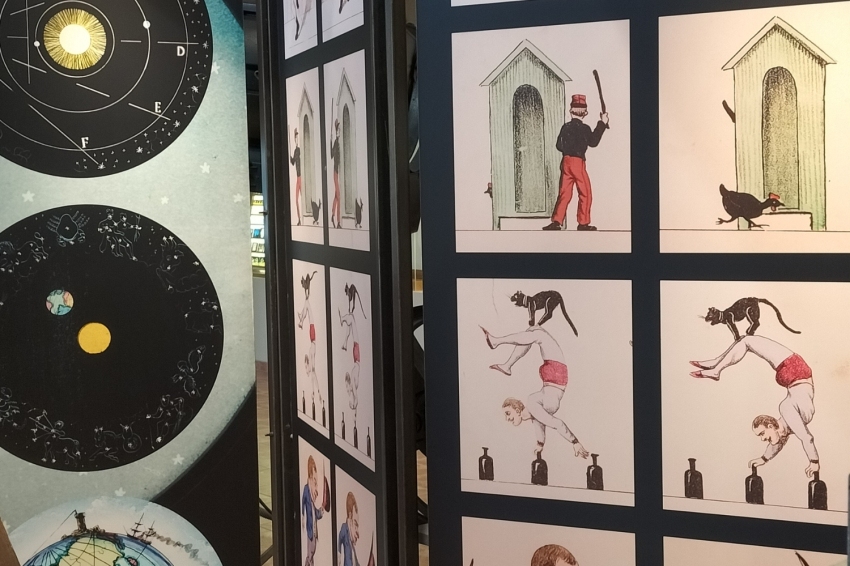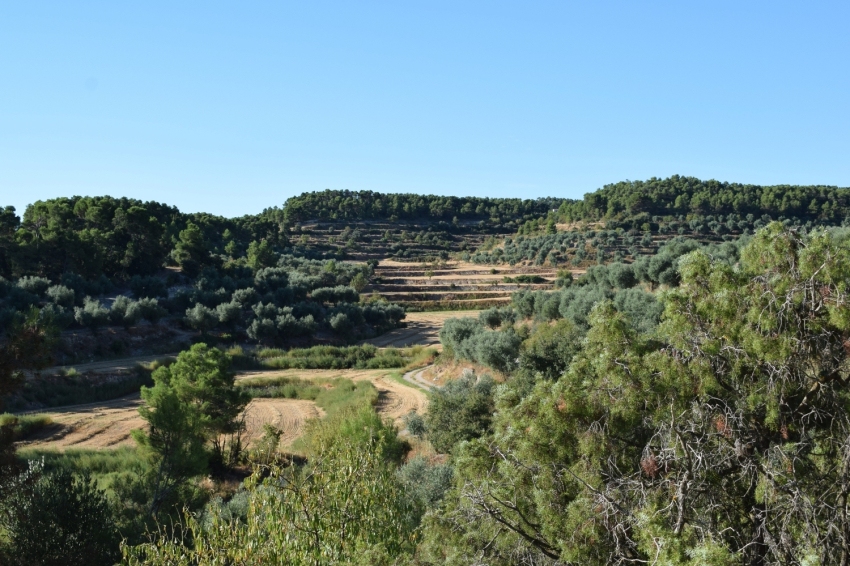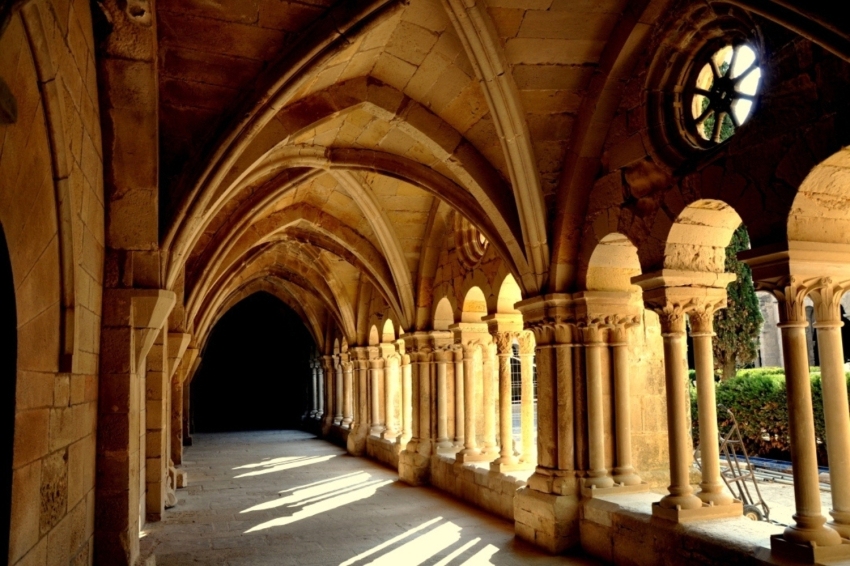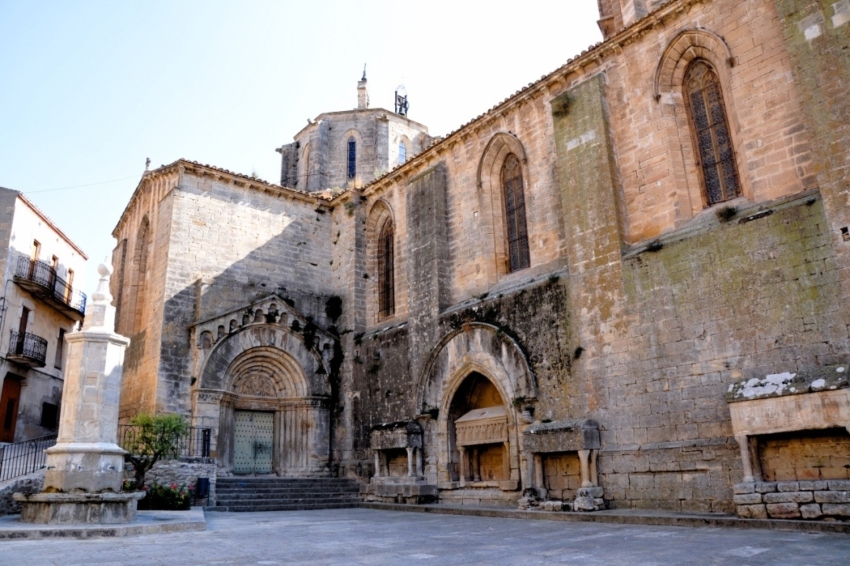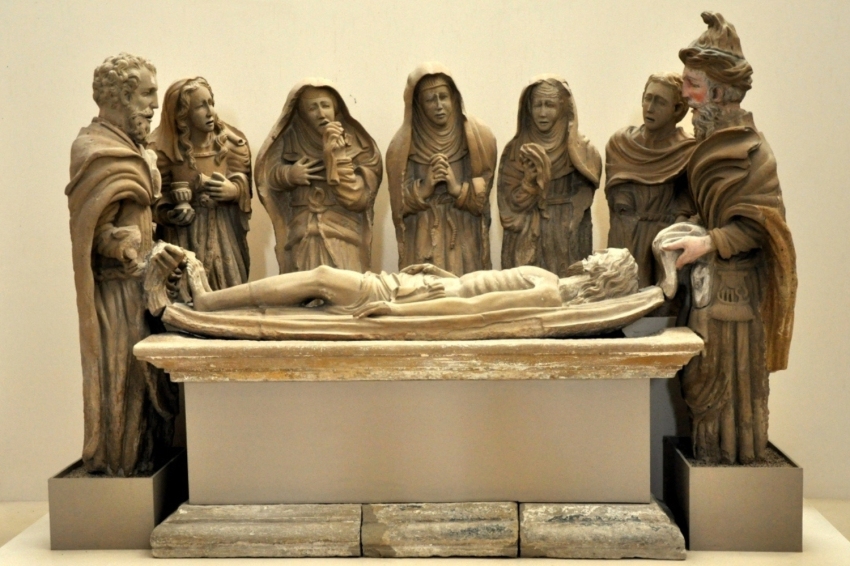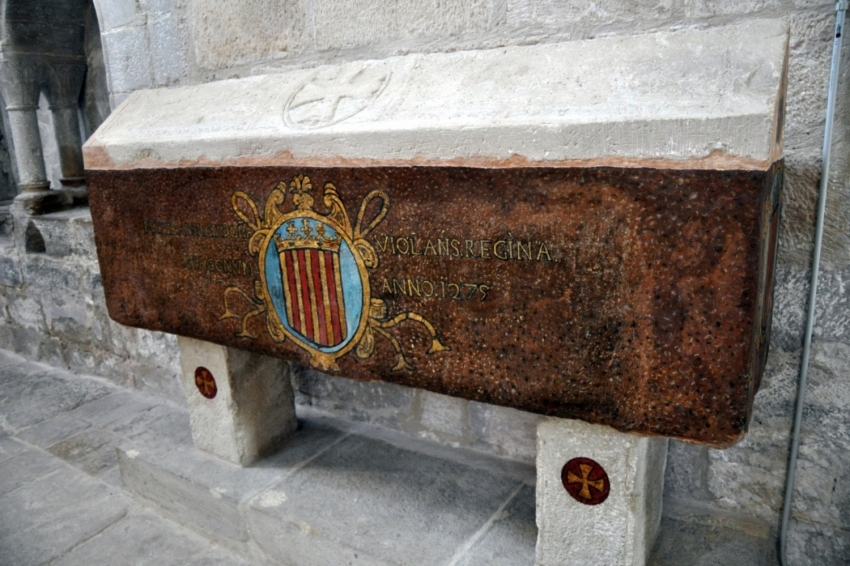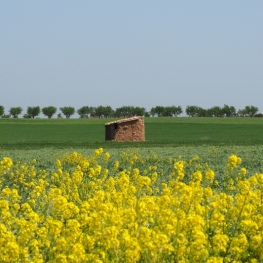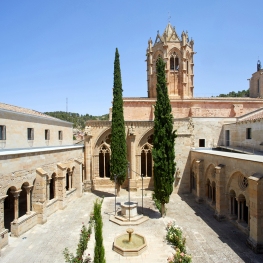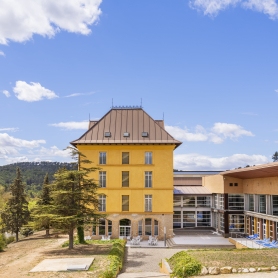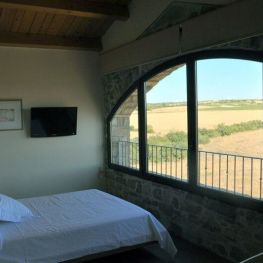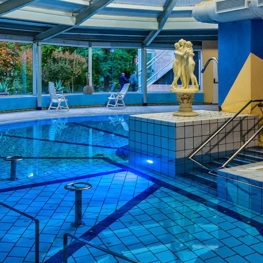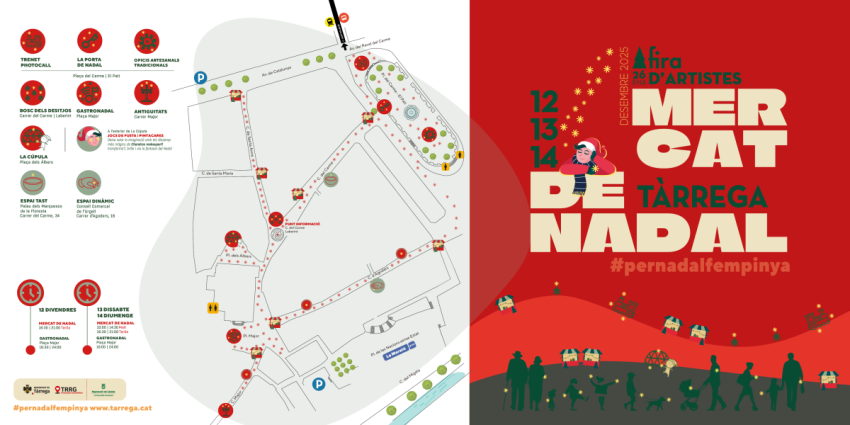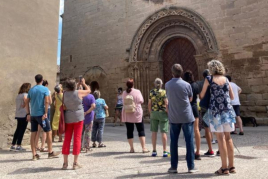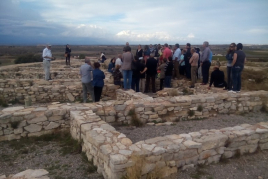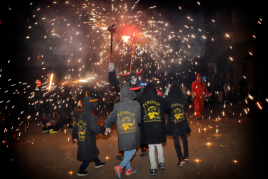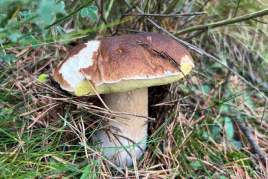Vallbona de les Monges
Vallbona de les Monges is located at the southern end of the Urgell region.
The municipality is also made up of the towns of Rocallaura and Montblanquet, in the Maldanell valley. Their main occupation is agriculture, especially vineyards, olive and almond trees and cereal. The first two activities have their own Denomination of Origin, for the "Costers del Segre" wine and for the "Les Garrigues" oil. However, the sector that is gaining more and more strength is the service sector with the tourist exploitation of the Monastery. Cistercian of Santa María de Vallbona, included within the Cistercian Route, and the different spaces and tourist resources that exist in the municipality.
The population of Vallbona de les Monges grew around the monastery and the first information we have is from 1153. However, Vallbona de les Monges cannot be understood without Montesquiu, the now abandoned town from which the neighbors came in 1573. called by the abbess of that time, Estefanía de Piquer, who offered them to live and work near the monastery in exchange for abandoning the town to safeguard the monastery from the provisions of the Council of Trent, which prohibited there being an isolated female monastery. The history of Montesquiu, his abandonment and his evolution can be seen captured in the Espai Montesquiu.
Since the Middle Ages, this monastic center has been very important, both for the properties and the monasteries that depended on it, but above all for the constant entry of nuns that has occurred since its foundation. Currently, the nuns who live there follow the rules and disciplines of the order of Sant Benet. Inside the monastery we find the church that stands out for its two domes, the 12th century cloister that mixes the Romanesque and Gothic styles, the chapter house and two chapels: that of San Cristóbal and that of the Virgin of the Cloister.
Apart from visiting the monastery, we can also see the churches that are located in the municipal core. In Vallbona we find the Parish Church of Santa Maria, from the 18th century; In Montblanquet is the Parish Church of Sant Andreu, with a Cistercian and Romanesque appearance; in Rocallaura, the Parish Church of San Lorenzo and, at the top of the Sierra del Tallat, we can visit the Sanctuary of Tallat, of which only the restoration of the Church of Santa María and the remains of the ruins remain. However, the views seen from this point are magnificent since the Sierra del Tallat is the highest in the Urgell region and is what allows fantastic views towards the Conca de Barberà, the Prades Mountains or the Forest of Poblet. A delight for the eyes.
In each of the centers there are also the old municipal laundries, all of them fixed up and, in particular, one of the two in Vallbona, where the Interpretation Center of Route L2 is located, the republican defense line that passes through the municipality and which has left trenches, bunkers, observatories and other military constructions that can be visited through a 26km signposted route that can be traveled on foot, by mountain bike or by all-terrain vehicle.
Precisely, in the municipality there is a wide range of paths, roads and paths that cross hills, plains can be seen or fields of cereals or olive trees are bordered, arranged in perfect terraces and with dry stone margins, with harmonious finishes and that almost bring The perfection.
Dry stone is, therefore, also a characteristic element in this enclave of ancient Segarra, where there are many constructions with this art: shelters, cisterns, cisterns, vaulted cabins, etc.
To understand this art more, the Espai Maldanell talks about this construction technique, the vestiges and the legacy that the ancestors left in these places, along with the biodiversity and nature projects that are being carried out in the municipality, like that of the estimapájaros, a project that has turned around the strict sense of the scarecrow. All of this is captured in the old building of the town's cooperative, the Molí de Baix, in which there is a recreation of the machinery and the operation of the elements that allowed the oil to be obtained, which was the basic food for this area of dry land
You cannot leave the town without visiting the first space dedicated to the seventh art in the lands of Lleida, the Cinema Museum Space, made up of part of the collection of pieces by Vallboní Josep Maria Queraltó, who has brought together all types of machinery unpublished novelty related to cinema: cameras, toys, projectors, magic lanterns and many more surprises.
Long live Vallbona!
What to do
Espai museístic del Cinema - Col·lecció Josep Maria Queraltó
Vallbona de les MongesThis is the first space dedicated to the seventh art in the…
Reial Monestir de Santa Maria de Vallbona
Vallbona de les MongesAn extraordinary space in which the passage of time is shared with…
Espai Maldanell
Vallbona de les MongesLocated in what was the first mill of the Vallbona farmers' cooperative…
Where to eat
Iberik Rocallaura Balneari
Vallbona de les MongesIberik Rocallaura Balneari is located on the Cistercian Route, in the municipality…
Where to sleep
Iberik Rocallaura Balneari
Vallbona de les MongesIberik Rocallaura Balneari is located on the Cistercian Route, in the municipality…
La Torre del Codina
Tàrrega (a 13.4 Km)The Torre del Codina is located in the municipality of Talladell, municipality…
Hotel Balneari de Vallfogona de Riucorb
Vallfogona de Riucorb (a 14.5 Km)Enjoy the Hotel Balneario de Vallfogona de Riucorb, which has modern facilities…
Events
Experiences
Discover the Monastery of Santa Maria de Vallbona - single entry…
Reial Monestir de Santa Maria de Vallbona (Vallbona de les Monges)

